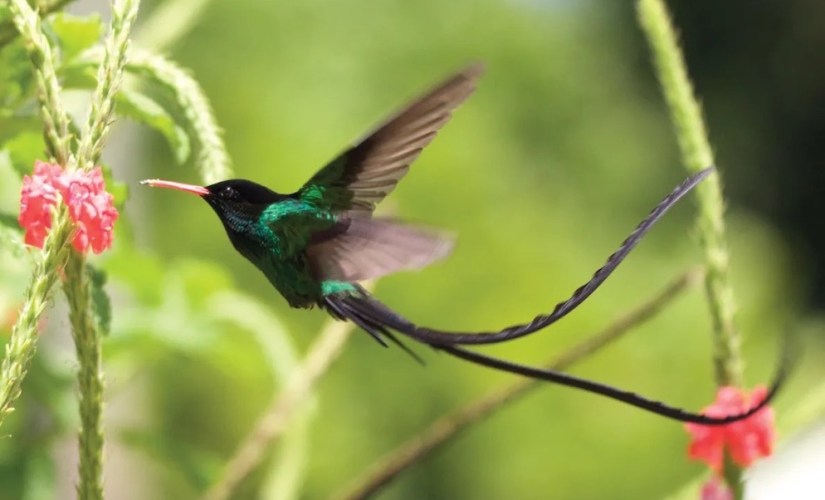The Caribbean, a region known for its vibrant culture, pristine beaches, and diverse wildlife, offers an unparalleled experience for travel enthusiasts and birdwatchers alike. With its unique geographical location and varied ecosystems, the Caribbean is home to an impressive array of bird species, making it a prime destination for ornithologists and casual bird lovers.
The Caribbean islands are home to over 700 bird species, many of which are endemic. This means they cannot be found anywhere else in the world. The region’s avifauna is characterized by a high level of biodiversity, including various species of hummingbirds, parrots, and the iconic Caribbean flamingo. From the colorful Cuban Tody to the elusive Grenada Dove, the region’s birds are as varied as they are beautiful. The warm climate and abundant food sources provide ideal conditions for birdlife throughout the year.
Trinidad and Tobago, a twin island nation located off the northern edge of South America, is often referred to as “The Land of the Hummingbird.” This nickname is not just a poetic phrase but a testament to the country’s rich biodiversity and the significant presence of these tiny, vibrant birds.
Hummingbirds, known for their iridescent feathers and rapid wing flaps, are a symbol of resilience and beauty, mirroring the spirit of Trinidad and Tobago. The islands are home to several species of hummingbirds, including the Ruby-Topaz, the Blue-chinned Sapphire, and the national bird, the Scarlet Ibis, which is often mistaken for a hummingbird due to its bright red color and swift flight.
The importance of hummingbirds to Trinidad’s ecosystem cannot be overstated. They play a crucial role in pollination, which is vital for maintaining the health of the islands’ flora. The government and local conservation groups actively work to protect these birds and their habitat, recognizing their value both ecologically and culturally.
Trinidad’s recognition as “The Land of the Hummingbird” also reflects the nation’s cultural diversity and vibrancy. Just like the hummingbirds that exhibit a variety of colors and species, Trinidad and Tobago boast a multicultural society with a rich tapestry of traditions, cuisines, and festivals, including the world-famous Carnival.
The hummingbird’s significance is embedded in the country’s history and folklore as well. Indigenous myths speak of the hummingbird as a sacred creature, and it is also featured on the country’s coat of arms, currency, and stamps, highlighting its status as a national treasure.
For nature enthusiasts and bird watchers, Trinidad is a paradise. The Asa Wright Nature Centre, located in the Arima Valley of Trinidad, is one of the premier places to observe these birds in their natural habitat. The center’s verdant grounds offer a sanctuary not only for hummingbirds but also for a variety of other wildlife, making it a focal point for conservation efforts and eco-tourism.



Birdwatching tourism can significantly contribute to the local economies of Caribbean nations. It encourages sustainable travel practices and promotes conservation efforts. Tourists who come for birdwatching are likely to engage with local guides, stay in eco-friendly accommodations, and support conservation initiatives, thus fostering economic growth while preserving natural habitats.
Each island offers unique birdwatching opportunities:
– Trinidad’s Asa Wright Nature Centre is renowned for its rich biodiversity.
– Jamaica’s Blue Mountains are home to the Jamaican Tody and Red-billed Streamertail.
– The Montserrat Oriole finds refuge in the lush forests of Montserrat.
The rise in birdwatching tourism has led to increased awareness of the need for conservation. Organizations like BirdsCaribbean work tirelessly to protect habitats and educate communities. By choosing responsible birdwatching tours, visitors can directly contribute to these efforts.
Timing your visit is crucial for a fruitful birdwatching experience. The best time to visit is during the migratory seasons in spring and fall when you can witness a plethora of migratory birds alongside resident species.
To fully enjoy birdwatching in the Caribbean, you’ll need some essential gear:
– A pair of quality binoculars for clear viewing.
– A field guide to help identify different species.
– Comfortable clothing and sturdy footwear for exploring various terrains.
– A camera with a good zoom function to capture distant birds.
Each island has its hotspots known for their bird populations:
– Trinidad’s Asa Wright Nature Centre: A haven for over 150 bird species.
– Jamaica’s Blue Mountains: Home to the endemic and elusive Blue Mountain Vireo.
– Cuba’s Zapata Swamp: The largest wetland in the Caribbean and habitat for the Cuban Trogon.
Birdwatching also plays a vital role in conservation efforts. By participating in eco-tourism, birdwatchers support local economies and contribute to the preservation of these magnificent creatures and their habitats.
In conclusion, birdwatching in the Caribbean is more than just a pastime; it’s an immersive experience that benefits both the observer and the observed. It supports local communities, fosters environmental stewardship, and offers a glimpse into the rich tapestry of life that thrives in these tropical havens.
Photos by James Wainscoat and Zdeněk Macháček

